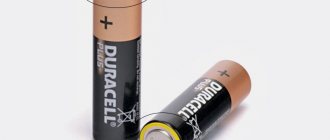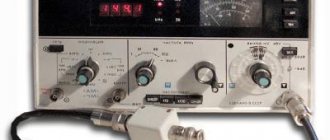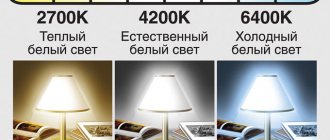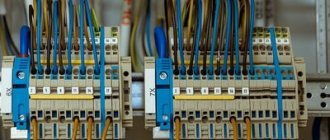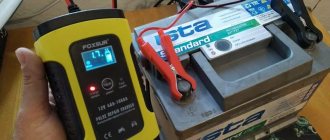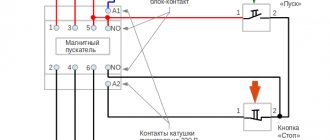Simple uninterruptible power supplies that we use in everyday life consist of a battery and a voltage inverter. More complex sources have many advanced capabilities and batteries connected in parallel, due to which their greater power is achieved, such as industrial and server UPSs. Battery jumpers are used in sources with more than one battery. They provide connection of batteries in the UPS and increase its power.
The weakest part of the UPS is the battery, since to ensure its long service life requires ideal conditions that cannot be reproduced in everyday life. It is the batteries that determine the duration of backup power and the power of the source. A UPS cannot exist without a battery. Therefore, it is important to choose batteries for sources wisely. In this article we will look at batteries for inverters and UPSs: what they are, when the UPS battery needs to be replaced and which batteries are best to choose.
Li-ion battery for UPS
Lithium-ion batteries have a high specific capacity, which allows them to be used to power powerful consumers. At the same time, Li-Ion batteries are compact in size and light in weight.
Advantages of lithium-ion batteries: low maintenance cost, no loss of capacity, low self-discharge rate, high energy density, high operational reliability.
Disadvantages: special chargers are required, have an aging effect, storage is allowed only in a charged form, small range of operating temperatures, high cost.
Review of popular models
Yuasa NP7-12
The Yuasa NP7-12 model has an above-average price tag (2.2─2.5 thousand rubles), but according to reviews from its owners, it lasts for at least four years. In some cases even more. The battery operates in a UPS both alone and when combined into batteries of two or more pieces (for example, in rack-mounted server models). There are no serious problems during operation.
By the way, this model with a voltage of 12 V and a capacity of 7 Ah is in demand not only among owners of computers with a UPS. Often these batteries are installed on children's toys with an electric motor. For example, children's cars or small electric scooters. There the battery is operated in a more severe mode, since it is constantly being heavily discharged and charged. But even in this case, it can withstand 2-3 years of moderate use.
Delta DTM 1207
Another AGM battery that has honest electrical characteristics. Electrode grids are made of a lead-calcium alloy, which increases strength and corrosion resistance.
The body is made of ABS plastic, which is resistant to mechanical stress and aggressive chemicals. In addition, it is non-flammable. The manufacturer claims that the product has a service life of at least 6 years. However, this is an exaggeration.
Most reviews about the Delta DTM 1207 model are positive. Owners of these batteries talk about approximately 10-12 minutes of battery life. This is a completely new copy. Gradually the capacity begins to decrease. Users using the Delta DTM 1207 in a UPS on a home computer report an approximately 7-10 percent drop in capacity per year. The total service life before failure is approximately 4-4.5 years.
Ippon IP12-7
An affordable model, which is developed by specialists in the UK and manufactured in China. The battery has a nominal voltage of 12 volts and a capacity of 7 ampere-hour. Dimensions are: 145 x 64 x 92 (LxWxH) mm. The battery design is sealed. But on the lid you can see round inserts that are held on with glue. If necessary, they can be opened. Under them there are rubber stoppers that block access to the cans, of which there are six. To connect to the UPS, the battery has two terminals of type F2.
Among the reviews that we were able to find about Ippon IP12-7, approximately 70% are positive, 10 are negative and 20 are neutral. In terms of service life, it is not inferior to the more expensive Delta and Yuasa. On average, this model lasts 4-4.5 years. I have not come across any reports of manufacturing defects. The cost is at the level of 1.5 thousand rubles. We can call Ippon IP12-7 the optimal solution. The battery has a good quality/price ratio. Works well with both native Ippon UPSs and third-party devices.
APC RBC17
This 12-volt model has a stated capacity of 9 amp-hours. The batteries found in our stores are manufactured in Vietnam. If you tear off the sticker, you will find the Vision manufacturer's marking underneath it.
Some APC RBC17 owners pointed out scratched terminals on new batteries in their reviews. In their opinion, this indicates used copies. But, I think, these are just traces of testing batteries in the quality control department.
Among the features include the delivery of this battery in a cardboard box for protection during transportation.
Users write reviews about smaller capacity than stated. Some carried out control measurements and received a result of 7-8 Ah. The service life is on average about three years. The cost in online stores is from 2.2 to 3.2 thousand rubles. In my opinion the price is a little overpriced.
CSB GP 12120 F2
Model CSB GP 12120 F2 has a larger capacity (10 Ah) than the above models. For connection there are F2 type terminals, and the housing dimensions are 151 x 101 x 98 mm. The manufacturer claims the operating temperature range is from minus 15 to plus 50 degrees. So, if necessary, it is quite possible to install a computer with such a UPS in the attic or on the street. The body and top cover are made of ABS plastic. Therefore, the insides of the battery are reliably protected.
The battery lasts an average of about four years under moderate load. This means operation with a home computer. If this is an office computer that works 24/7, then the service life may be reduced. There are quite a lot of reviews about this model and we can say with confidence that the CSB GP 12120 operates without problems with most brands of uninterruptible power supplies.
Among the disadvantages, owners of the CSB GP 12120 note the high cost. Indeed, the price tag is somewhat high. Despite the slightly larger capacity, the battery costs significantly more than 7 Ah models. It can reach up to 3.2 tr. Perhaps, such an overpayment is unjustified for 2-3 extra ampere-hours.
Nickel Metal Hydride Battery for UPS
Ni-MH batteries are not widely used due to operational difficulties.
Advantages of Ni-MH batteries: no decrease in capacity level, high energy density, stable operation, high specific capacity.
Disadvantages: high level of operating costs, complex charging process, high level of self-discharge, deep discharges have a detrimental effect on the battery, low load capacity, small range of operating temperatures, high cost, small number of discharge-charge cycles.
Dimensions
Dimensions can be considered a separate parameter. Unlike car seats, UPS, although a single standard has been developed, is interpreted very loosely. That is, it is quite possible to buy a battery that simply “will not fit” inside your UPS.
The dimensions of the battery seat are minimal
. The dimensions are especially important if you are not using a standard battery, but a product from another manufacturer with a larger or smaller capacity.
In this case, before purchasing, you should disassemble the uninterruptible power supply and measure the dimensions of the battery seat, and then check them with the dimensions of the purchased product - fortunately, all manufacturers indicate this characteristic on their websites. Many companies that sell batteries care about their customers and provide information about batteries that are suitable for replacing a specific UPS battery. For example, the page on batteries for UPS Ippon website, which contains many alternative batteries for the Ippon Back Power Pro 800, helped me a lot. In addition to the correct sizes, they all correspond to 12V/9Ah parameters, but the recommendations on the manufacturer’s website (Ippon) indicate model 12V/7Ah.
Nickel-cadmium batteries for UPS
Ni-Cd batteries for computer uninterruptible power supplies have become increasingly popular in recent years due to their small size and weight, which is why they are increasingly used in portable electronics. They are also used as batteries for uninterruptible power supplies.
Advantages: resistance to temperature changes, ease of operation, high reliability, low cost, low percentage of self-discharge, can withstand up to 1500 recharge cycles, high energy density.
Disadvantages: high cost of disposal and recycling, made from a highly toxic substance, loss of capacity, “memory effect”.
What parameters should you pay attention to when choosing?
Let's look at a few key characteristics that need to be taken into account when choosing a battery for an uninterruptible power supply.
Capacity
Battery capacity is one of the most important parameters. Its value determines the time that the computer can operate from an uninterruptible power supply when the household power supply is turned off. This is exactly the time allotted to the user to save all data, correctly terminate programs and shut down the computer normally.
The capacity on these batteries is most often indicated in ampere hours.
This value is measured in the 20-hour discharge mode. Therefore, next to the capacity designation there is often the signature C20. In the UPS of a personal computer, batteries with a capacity of 7 to 12 Ah are most often found. The increase in capacity is directly related to the size and weight of the battery. The larger the capacity, the greater the mass and size. For this reason, in the UPS you need to choose a battery close in capacity to the old one.
If you take a model that is significantly larger in capacity, it simply will not fit into place. If the capacity is significantly lower, the battery life will decrease. For different UPS models, manufacturers select the battery depending on the battery life it should provide. These parameters are related by the following formula. Tau. work = (Uakk * Cakk * KPDibp * Kgr * Kde) / Pobor, where
- Tau. work – battery life, h.
- Uacc – battery voltage, volts.
- Bacc – battery capacity, ampere-hour.
- KPDibp – efficiency factor. From 0.8 to 0.95.
- Kgr – discharge depth. From 0.8 to 0.9.
- Where is the coefficient of available capacity. Depends on discharge time: 0.7 (1 hour), 0.85 (2 hours), 0.95 (10 hours), 1 (20 hours).
- Draw – the total power of the equipment connected to the UPS. For a computer there is usually a system unit and a monitor.
An example for an average computer. The power of the system unit is 550 watts, the monitor is 40 watts. Calculation of battery life for a 12 V, 7 Ah battery. T = (12 * 7 * 0.85 * 0.85 * 0.7) / 590 = 0.072 hours or 4.5 minutes.
Using this formula, you can select a UPS with a suitable battery for your computer, based on the power of the equipment and the required battery life.
Discharge current
The magnitude of the discharge current determines what power equipment can be connected to the UPS. It's better to take extra. In this case, the battery will operate in gentle conditions. How to calculate the maximum discharge current?
In the example above, the total power of the computer was 550 watts. In this case, Idisp max is equal to 550 watts / 12 volts. That's about 46 amps. The maximum discharge current of the UPS should exceed this value approximately twice.
Voltage
The battery voltage for a computer power supply is usually 12 volts. This is the power supply standard for computer system units. There are other models of uninterruptible power supplies. For example, 6, 9, 24 V.
In any case, the battery voltage must be exactly the same as the old model. Some large capacity UPSs may use multiple batteries. If they are connected in series, then the voltage of the new battery must correspond to the old one being replaced.
Internal resistance
This parameter is rarely indicated in the documentation, and you are unlikely to be able to check it upon purchase. To evaluate it you will need equipment. However, this important value indicates the quality of the battery. The lower the resistance, the better the battery. The internal resistance depends on the working surface area of the battery plates. This determines how good contact the electrolyte has with the electrodes. By the way, the maximum discharge current, which was mentioned above, is always lower for batteries with a high internal resistance value.
Electrochemical system
Most often, a UPS for a computer uses lead-acid AGM batteries. Their peculiarity is that the electrolyte is present here as an impregnation of fiberglass mats. This material surrounds the electrode plates and is not only a binder for the electrolyte, but also acts as a separator.
AGM batteries are best suited for uninterruptible power supplies due to the fact that they have an optimal ratio of price and electrical characteristics. Read more about AGM technology in this material.
They can experience a deep discharge with virtually no consequences (it is advisable not to discharge more than 80%). While AGM car starter batteries are quite expensive, UPS batteries have a small capacity and cost between 1-1.5 thousand rubles. for the average model.
The lead-acid group also includes classic batteries with liquid electrolyte. They are not used in computer UPSs. They can only be found in some large industrial uninterruptible power supplies. They use varieties of battery cells with armored electrodes. An armored mesh is present on them to strengthen the active mass on the plates. Another type of lead-acid battery is GEL. Here, the sulfuric acid solution is converted into a gel state using the addition of silicon dioxide. These models have their advantages and disadvantages, but they are not found in common computer UPS models.
It is also worth saying that alkaline batteries are not used in uninterruptible power supplies for computers. Nickel-cadmium and nickel-metal hydride batteries are capable of delivering high current, but are not at all designed to operate in this mode.
Recently, UPSs using lithium-ion batteries have appeared. However, this is still exotic.
The advantages of lithium batteries include high energy density, fast charge recovery, and high discharge current. Problems include severe loss of capacity at subzero temperatures. But when used indoors this is not a problem.
Today, we can definitely recommend purchasing “uninterruptible power supplies” based on Pb AGM batteries. Subsequently, it will be much easier and cheaper to replace a used battery. When choosing a battery, we advise you to focus on the compatibility tables that are produced by all self-respecting companies that produce UPS. They provide information on the models and characteristics of the batteries that are suitable for them. It also lists batteries that can be installed in an uninterruptible power supply instead of the standard model.
Company manufacturer
Now the vast majority of companies locate their production in Southeast Asia. Therefore, batteries for computer UPSs, sold under different brands, may well be made at the same enterprise. But it still makes sense to focus on popular brands that have been on the market for a long time. At least their technical control department works well and there are no obvious defects on sale.
Among the well-known brands of small-capacity AGM batteries are the following.
- Yuasa.
- Delta.
- C.S.B.
- Ippon.
- Fiamm.
Among the less popular ones we can name these.
- Powerman.
- Energy.
- WBR.
- Sven.
- East.
- Ginzzu.
- Crown.
Some of these brands also produce lines of different UPS models. For example, Ippon.
GEL technology batteries
Gel batteries for UPS contain a thickener that brings the electrolyte to a jelly-like state. During operation, this type of battery does not emit any gases, making it possible to manufacture a sealed case. No special maintenance is required for such batteries, and they are safe for health.
Gel batteries for uninterruptible power supply systems have a long service life, high capacity, a wide range of operating temperatures, and high reliability, but such batteries are more expensive and cannot withstand deep discharge.
How do you know when the battery needs to be replaced?
The battery wears out its life mainly as it cycles through charge and discharge cycles. For AGM batteries, this resource is 400-500 cycles. As the resource is used up, the battery loses capacity and, because of this, the battery life of the computer from an uninterruptible power supply decreases.
Manufacturers recommend replacing the battery when the battery life has decreased by approximately 25% of the original value. For example, at first the time was about 6 minutes, but it became 4.5 minutes. But in practice, users change the battery when it has lost more than half of its capacity. If there are few problems with power outages, then people simply forget about this problem and change the battery when it completely fails.
For such models, bloating is a common occurrence due to excessive release of gases inside. This can happen if the battery is frequently overcharged or overheated. For example, the UPS is located in an unventilated room with a high temperature or is pushed into a corner (cabinet, etc.) where there is no ventilation. If you don’t want the UPS to fail you at the most inopportune moment and the computer to turn off before you have time to save data, change the battery in advance.
Batteries using AGM technology
This type of battery is the most modern. This is an improved version of gel batteries. The electrolyte in these batteries is absorbed into porous fibers to give it a jelly-like structure. These batteries are manufactured in sealed cases and have reduced electrical resistance, which has a positive effect on their properties. This type of battery is increasingly being used in UPS applications. The advantages of AGM batteries include long service life, low maintenance costs, low cost, large epicritic capacity, and high reliability.
All rechargeable batteries deteriorate over time, so you have to look for where to return the batteries from the UPS. However, some of them can be tried to be revived. But the question immediately arises: “How to charge the battery from an uninterruptible power supply?” Without a special charger, it will not be possible to restore the UPS. We have looked at what batteries are used in uninterruptible power supply systems today. Now you can go to the store for a new battery for the UPS, and recycle the old one and not have to worry about restoring it.
Technological subtleties
When charged, oxygen is released at the positive electrode and electrolysis (decomposition) of the water contained in the electrolyte occurs.
Therefore, in “regular” batteries (which are used, in particular, in cars), you have to open a special plug to remove gases. This, frankly speaking, is inconvenient - every time you check the density of the electrolyte, add water, close the cap... Therefore, special technologies for recycling the oxygen released during charging were invented. To utilize oxygen, it is necessary to deliver its bubbles to the negative electrode, where it reacts with lead. This is achieved in two ways:
- using a separator with small cells made of special synthetic material,
- thickening the electrolyte with special additives.
In the latter case, the electrolyte takes on a gel-like state and does not leak out, even if the battery is turned upside down. The separator and gel retain air, and oxygen bubbles safely reach the negative electrode, since diffusion in gas occurs much faster than in liquid.
If the oxygen released during charging is utilized, there is no loss of water in the electrolyte and there is no need to add it. Ease of maintenance is improved, but the number of charge-discharge cycles still remains limited.
Manufacturers
There are a huge number of manufacturers of replacement batteries for uninterruptible power supplies. All manufacturers should be divided into two groups:
- Companies specializing in the production of batteries. This market is highly competitive, and frankly bad models are difficult to find. There are many reviews, use stories, descriptions of recovery options, and dangerous models; studying them will help you avoid running into a frankly failed model. Otherwise, the quality is quite proportional to the cost. Representatives of this “block” are CSB, Fiamm, BBBattery, Ventura, Sonnenschein, Coslight, AQQU.
- UPS companies. If you see a battery brand that matches the UPS brand (SVEN, Ippon, 3Cott), this is a reason to carefully study reviews and forums. Often, UPS manufacturers simply buy inexpensive models and “brand” them for themselves. “Giants” such as APC stand apart - their production and market surpasses most component manufacturers.
